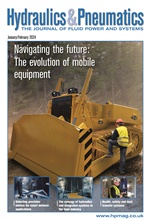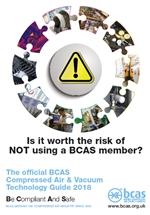The rise and rise of industrial robotics

Robots in one form or another have held a fascination in the public psyche since the ancient world. The philosopher Mozi discussed humanoid automatons in the 4th Century CE, while discussions concerning artificial companions and servants are found in the ancient legends of Cadmus, who, legend has it, sowed dragon’s teeth that magically morphed into soldiers. Some will remember the robot in the 1960s TV series Lost In Space and its friendly and helpful (though sometimes a little obstinate) human-like character. Then, there is Star Wars’ C-3PO and the list goes on. More recently, several companies have been designing and developing humanlike robots for healthcare, general assistance and companionship. Also, more and more children and young adults are becoming fascinated by a growing number of celebrity robots and the way they ‘come to life’ through artificial intelligence (AI).
During the early part of the last Century, humanoid machines were made for use in factories in order for companies to require less human deployment – or to manage tasks that were often overly burdensome physically for the human workforce. Then in 1954, Unimation founder George Devol developed a hydraulic arm called Unimate, used to lift heavy loads and put to work at General Motors. Some of us will remember the introduction of the first industrial robots that were programmed digitally and had fairly basic AI capability around the dawn of the second millennium.
More recently, companies such as Tesla have been developing robots that are virtually indistinguishable from humans – Optimus, for example. However, while there are some instances of humanoid robots being developed for entertainment and social purposes, the majority of robots will not take after their creators, says GlobalData, the data and analytics company. GlobalData’s report, ‘Robotics – Thematic Research’, maintains that industrial robotics will play a key role in the robotics market over the coming decade. Sales of industrial robots hit US$18.6 billion in 2021, representing 35% of the total market, and will rise to $352 billion by 2030, 62% of the total market. This growth is being driven by the desire to automate factory systems and production processes
Martina Raveni, associate analyst in the Thematic Intelligence team at GlobalData, considers that while we may be dreaming of humanoid robots, in reality the most popular consumer robot is still a vacuum cleaner shaped like a disc. “In factories and warehouses, human staff work alongside robots that are incredibly good at performing repetitive and dangerous tasks but do not look or behave like humans,” she says. “In fact, making robots humanoid often requires significant technological effort for very little benefit. Robots will have different appearances depending on their role. Care robots, which are mainly built to assist older people with day-today activities, will typically resemble humans for a more personal approach. Meanwhile, collaborative robots (co-bots) and caged robots, which are designed to work in factories, do not need to reproduce the human body in its entirety but only a specific part of it.”
-
Smart Manufacturing & Engineering Week
05 - 06 June, 2024
NEC, Birmingham -
HILLHEAD 2024
25 June, 2024, 9:00 - 27 June, 2024, 16:00
Hillhead Quarry, Buxton, Derbyshire UK










